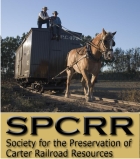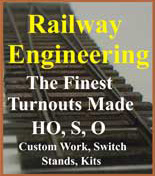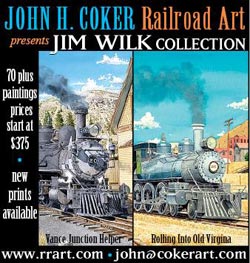Too often we wait for the next big thing to drive a blog post… Instead this post is an amalgamation of notes and such… Kind of a occasional status report…
First sad news… Recently Bill Barbour long time narrow gauge enthusiast died of a heart attack suffered while working on Nevada Central No 2, the Emma Nevada. He was best known for his association with the Grizzly Flats collection at Orange Empire. He had also authored articles for the Southern Pacific Narrow Gauge Society and was seen driving the first truck delivering the first ties to the then new SPCRR at Ardenwood in 1984 or so. Reports suggest he was inside the boiler of Emma when struck down… we can all hope for such a proper fate…
Regular users may have noticed that the forum has been slow… that the site can occasionally be slow… this in part a server issue, but is also an issue with the template which gave the forum its custom appearance… for now we are using default appearance while Andrew reworks the code… It’s not as pretty but it will work. Andrew continues to monitor it, adjust it, reset and repair it. Though on occasion Andrew can be tied up elsewhere and may not notice the slow downs immediately. If you have any issues, please use the Contact Us page to send us a bug report. Don’t underestimate Andrew’s efforts to make this site what it is… this is the big bad world of the internet and electronic communications….
Even with the work on maintaining the forum, there have been and will continue to be updates… particularly adding write ups on various narrow gauge railroads… In February we posted reports on the California & Nevada Railroad. by John Hall as well as two on Hawaii railroads, the Koolau Railway & Oahu Railway & Land Co. both by Jeff Livingston. I am working on write-ups for the Calico & Daggett, the Borate & Daggett and the American Borax Railroads as well as Old Mission Cement, Andrew is always working on Colusa & Lake and Nevada County Narrow gauge, along with any and all Prismordial railroads. Others are encouraged to submit articles on railroads to be added
Coming soon (“soon” being a poorly defined concept):
Sumpter Valley Railway (w/ Map)
Yellow Pine Mining (Nevada, w/Map)
Copper Creek Railroad (w/Map)
US Navy Pearl Harbor by Jeff L
U.S. Gypsum (w/Map)
Andrew would like to promise Eureka Mill… but history suggests that might be a mistake… but, someday when you least expect it, it too will appear…
Finally, we have two upcoming events… first, on May 3rd we will have a group visit to the North Western Pacific Historical Society archives and library in Petaluma. There are currently three of us attending, but more would be welcome. Sonoma Valley seems to be one of the many targets mentioned. A week later, May 8-10 we will join the SPng Historical Societies annual conference in Independence California.
We expect to announce additional events… Railfair at Ardenwood over Labor day looks like a likely target…
Beyond that, we would welcome other’s contributions… The site is valuable because of the information it holds… You can contribute to the information…
Thank You, Randy





